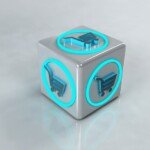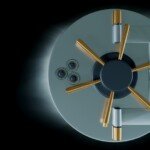Keep your HAAS CNC running like a Swiss watch: Necessary maintenance must be played
In a high-risk world of precision manufacturing, your HAAS CNC machine is more than just a tool. They are the beating heart of your production line. When they run smoothly, the shift changes provide a micro-level transfer of accuracy, and profitability soars. As they drop, deadlines slip, expenses soar and stress levels soar. As leaders in Greatlight’s five-axis CNC machining, we have witnessed first-hand how proactive maintenance can separate the store from those who are constantly fighting fires with peak performance.
Haas machines are known for their reliability and user-friendliness, but like any complex electromechanical system Require Regular special care. Neglecting maintenance is a false economy that inevitably leads to premature wear, unexpected collapse, scrap parts, and expensive emergency repairs, dwarfing investments in a solid prevention program. Here are our in-depth knowledge of the HAAS CNC maintenance essentials you absolutely cannot skip:
Daily Ceremony that is Not Negotiable: Your First Line of Defense
-
Visual and auditory examination (before power-on):
- Walk around: Check for obvious leaks (oil, coolant, air), loose cables/hoses or debris piled up on fences or power panels. Look for damage to the lid or wiper.
- listen: Before you begin, manually train the spindle where possible (according to the manufacturer’s guide). Listen to abnormal polishing or scratching sounds during this or during the initial power sequence. Any new or abnormal noise is a red flag.
- Coolant level: Check the main reservoir and any auxiliary tanks (e.g. in a coolant skimmer). Add the correct premixed coolant concentrate and water (external mix! Never add pure concentrate directly to the low tank). Low coolant can cause poor chip evacuation, overheating of tools and unaccustomed shutdowns.
-
Lubrication system inspection:
- HAAS machines mainly use automatic metering lubrication systems for linear methods, ball screws, and sometimes spindles. Verify that the lubricant oil pump reservoir has sufficient lubricant (usually for oil ISO 68 or victra #2 equivalent). Make sure you see the pump cycle during warm-up or initial movement. Low lubricants can cause catastrophic wear and tear in a very short time.
-
Air pressure confirmation:
- Verify that the air pressure at the machine regulator meets the HAAS specifications (usually about 80-90 psi). Ensure that the pressure remains stable during operation. Inadequate air pressure weakens tool change function, grip release, spindle cooler operation (if applicable) and pneumatic balance. The air must be clean and dry – check the separator drain pipe every day.
-
Ways to cover and chip evacuate:
- Visual inspection method covers (bellows) for tears, damage or excessive accumulation to prevent movement. If possible, manually wipe the exposed guideways around the spindle area.
- Check that the chip conveyor or auger can run freely, rather than clog it. Clear any significant accumulation around critical areas such as spindle nose or tool changer. The chip enters the cover or bearing to cause accelerated wear.
- Cleaning (critical after shifting):
- Thorough cleaning: Blow off the entire work envelope, machine surface, tool shifter and control panel with dry, clean air (don’t place high pressure air directly into the seal or motor!). ). Wipe the control pendant and screen. Sweep or vacuum debris around the base.
- Spindle nose and tool holder: Make sure to carefully clean the spindle taper and tool holder before inserting any tools.
Weekly in-depth diving: Prevent cumulative problems
-
Deep cleaning of coolant system:
- Remove and clean the filter basket or screen in the coolant tank. Skip the tramp oil from the surface of the tank to prevent bacterial growth and soreness (damaging the seal and mass). Check the bottom of the tank for too much fines – If needed, consider a store VAC designed for coolant.
- Verify coolant concentration and pH levels with a refractometer and test strips. Adjust the concentration as needed. Bad coolant ruins tools, parts and machine components.
-
Filter Check:
- Check the air intake filter on the electrical cabinet and main air filter/regulator. Dust buildup can lead to overheating and unstable electrical behavior. Clean or replace if necessary.
-
Detailed visual inspection:
- Watch carefully the signs of missed problems every day: small leaks, early rust, fixing fixtures or fixtures on fixtures, damaged hoses or cables showing wear points.
- Way to cover cleaning and lubrication:
- Mechanically remove chip buildup from the folds and orbits of the telescope cover. Each HAAS is recommended to gently lubricate the slide track.
Monthly Maintenance: Calibration and Component Care
-
Hydraulic unit (if equipped):
- Check the hydraulic fluid level and condition. top up The only one Use the exact designated fluid. Looking for leaks. Verify system pressure (if possible).
-
General inspection of spindle warm-up:
- While warm-up routines are ideally run daily, check carefully that they work properly and that the spindle reaches temperature without vibration or abnormal noise. Verify any spindle air purge pressure. Replace the spindle inlet air filter every month.
-
Detailed lubrication system inspection:
- Make sure the lubrication wire is not blocked, not kneaded or crushed. Observe the lubrication metering unit (if visible) to ensure that the oil droplets are distributed at the lubrication point during the cycle.
- Tool changer mechanism check:
- Visually check the carousel, grip arms, and any wear, debris or damage to the alignment mechanism. Ensure smooth movement without bonding.
Quarterly and semi-year focus: Precisely ensure storage
-
Lubricant removal (key!):
- Many HAAS lubrication systems require manual pumping of fluid through the system to remove possible air pockets and ensure that lines are full. This is usually done quarterly and runs according to time. Consult your manual – Improper lubrication is the main reason for expensive ball screws and access. This sometimes involves using the manual pump port on the machine.
-
The coolant tank is completely flush:
- Drain, clean and completely fill the coolant tank with fresh, properly mixed solution. This prevents long-term residue accumulation, bacterial and chemical imbalances, which can damage performance and part quality.
-
Cabinets and motors:
- Switch and lock/mark safely. Open the electrical cabinet and use an ESD (Electrostatic Discharge) safe vacuum to gently vacuum crush and debris. Check if the fan intake/exhaust will be blocked on the servo motor and spindle drive. Gently clean. Overheating electronics fails prematurely.
-
Drive belt tension (older machines/specific spindle):
- Some spindles use belts. Check tension and condition every quarter. Replace in the first sign of cracking or glaze. Incorrect tension can lead to loss of accuracy and spindle damage.
- Adjustment check:
- Use the level of a high-precision mechanic to verify that the machine foundation is not moving. Severe differences distort castings, destroying accuracy. Correct as needed as needed.
Annual/Calibration Interval: Accurate Foundation
-
Professional calibration:
- Crucial: Arrange annual calibration by a certified technician or your HAAS factory export (HFO). This involves:
- Cone test: Check the axis positioning circle and reveal rebound, servo adjustment problems and mechanical looseness during conventional cutting.
- Laser calibration: Accurately measure and correct linear positioning accuracy, axis straightness/pitch/yaw and the square of the entire stroke.
- Spindle probe calibration (if equipped): Ensure the accuracy of detection tool settings and workpiece measurements.
- GREMLIGHT’s viewpoint: In five-axis work, complex geometry and tight tolerances are crucial, and annual calibration is not optional – a cornerstone of the first part delivered. Slight deviations invisible in simple 3-axis work become catastrophic errors on complex contours.
- Crucial: Arrange annual calibration by a certified technician or your HAAS factory export (HFO). This involves:
-
Drive motor braking test:
- The vertical machining center relies on the Z-axis brake. Annual inspections ensure they are reliably maintained, preventing catastrophic declines during power outages or motor downtime. HFO technicians do this.
- Complete system backup:
- Backup all critical machine parameters, offsets, programs, tool tables (setng, offset, prog files) to redundant locations before monthly or any major changes/maintenance. Annual verification of backup integrity is wise.
Great Advantage: Beyond List
At Greatlight, our wide range of advanced five-axis CNC machines (including several HAAS models) carry out this strict maintenance system, etc. We understand consistency is key. We also advocate:
- Condition monitoring: During high-precision operation, vibration analysis and thermal imaging are used to detect subtle problems before they lead to failure.
- Operator training: Make sure every operator is aware of basic daily tasks, knowing warning signs and value cleanliness.
- Predictive and preventive: Go beyond a fixed schedule where possible. Tracking spindle load data and cycle time may indicate a problem.
- Customized plan: The VF-2SS in the prototype store has different needs than 24/7 DMU grinding. Plans tailored to the hours, materials, environment and machine criticality.
Conclusion: Invest in uptime and get rewards
Thinking of your HAAS CNC maintenance plan as anything less than strategic priorities is an expensive gamble. Neglected machines inevitably turn your precise assets into liability. this "Must do" Outlined here is your roadmap for maximizing machine life, protecting accuracy (especially important for complex five-axis jobs like our excellent in Greatlight), minimizing unplanned downtime, and protecting your investment from catastrophic failures.
The financial equation is clear: relatively small, planned investments and preventive maintenance of consumables exponential dividends in avoided repair costs, scrapped material costs and ongoing production capacity. It’s not just about repairing machines; it’s about enabling them to consistently produce perfect results, project by project by project.
Ready to focus on making perfect, not machine failure? At Greatlight, our commitment to peak machine performance is based on our ability to deliver custom precision machining metal parts at speed, accuracy and value. We provide comprehensive maintenance support and expert five-axis CNC machining services – let us address your complex manufacturing challenges. Contact Greatlight now for a quote!
FAQ: Your HAAS CNC maintenance question has been answered
-
Q: I only run my Haas occasionally. Can I skip some maintenance?
- one: Absolutely not. The machine deteriorates over time and use. Lubricant can be drained slowly, closed and dry, and will be fouled even when sitting. Time-based intervals (e.g., quarter, year) are observed regardless of runtime. Daily inspections are still crucial before operation.
-
Q: What is the actual cost of proactive HAAS maintenance compared to major repairs?
- one: Regular maintenance costs are predictable and relatively low (lubricant, coolant, filter, some manual). Major repairs (such as replacement spindles, ball screw assembly, or cover cover) are stuck in tens of thousands of dollars of parts and labor, plus days or weeks of downtime. Avoiding costs are huge.
-
Q: What is the biggest warning signal for maintenance to be ignored?
- one: Note: Increase noise/vibration of the shaft or spindle; loss of positioning accuracy or repeatability; surface surface difference of the part; abnormal alarms (especially servo or overflow); slow shaft movement; leakage; frequent tool breaks; excessive heat; spindle buckles; decay of coolant.
-
Q: Can I do the calibration by myself (Ballbar/Laser)?
- one: Despite the presence of a DIY kit, it is highly recommended to professionally calibrate the HAAS training technology. They have the highest precision equipment, specialized expertise, and the right to correctly interpret complex data, as well as the permission to perform necessary parameter corrections. Improper calibration may be worse than not. HFO offers a comprehensive calibration certificate that is valuable for quality records.
-
Q: Are HAAS parts very expensive?
- one: While true HAAS parts are the first choice for key components, many consumables (filters, basic seals, wipers) have after-sales equivalent factors. Using high-quality equivalents for non-critical wear parts can save money, but always ensure compatibility and performance. For spindle bearings, drivers and complex components, real parts are often the most reliable choice.
- Q: Given that you are a service provider, why does Greatlight emphasize maintenance?
- one: At Greatlight, we own and operate our equipment. We learned that consistent 5-axis accuracy and hit positive lead times are completely dependent on our machine’s performance perfectly. Our strict internal maintenance protocols minimize disruption, ensure the quality of customers rely on and extend the life of large capital investments. This is crucial to our value proposition.

















